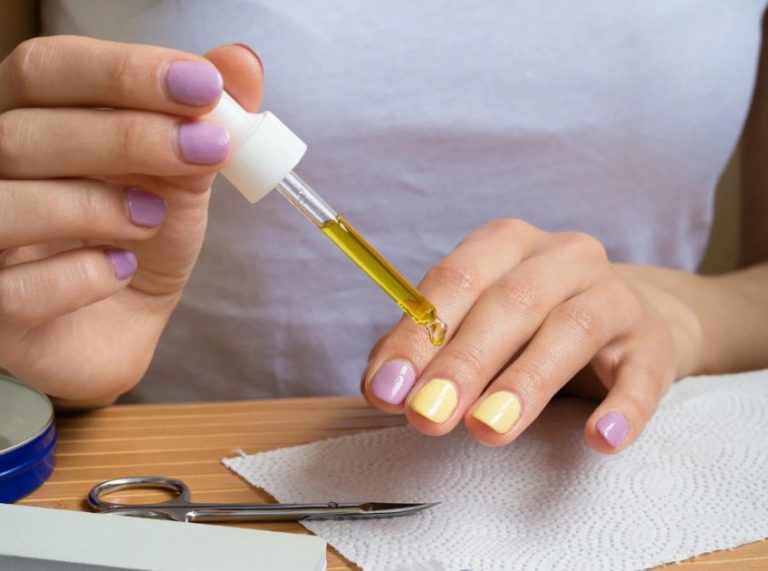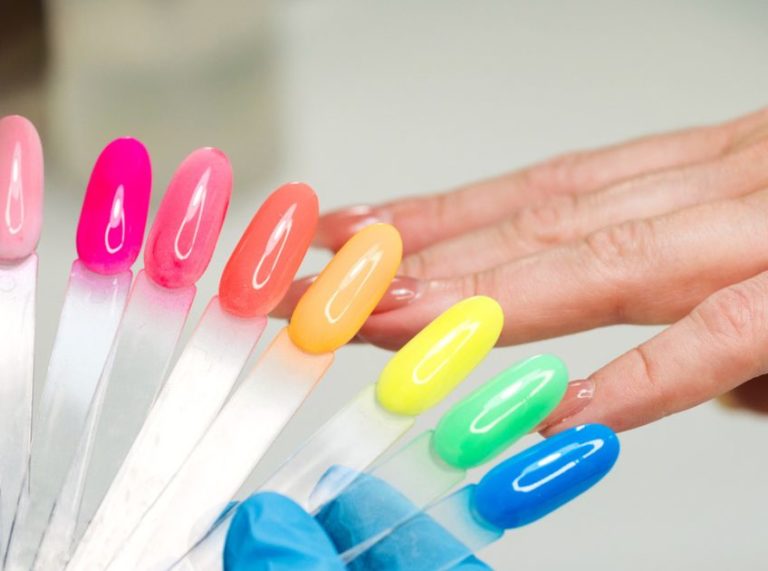
Important: This article is for informational purposes only. Please read our full disclaimer for more details.
Acetone is the go-to for removing dip powder nails, but it’s not always kind to your skin or nails. If you’ve ever dealt with dry cuticles, irritated skin, or brittle nails after an acetone soak, you’re not alone. Fortunately, there’s a less aggressive way to say goodbye to your dip manicure—no acetone required.
Whether you’re avoiding chemicals or just don’t have acetone on hand, this step-by-step guide shows how to remove dip nails at home using gentle alternatives safely. Bonus: most of the tools are probably already in your kitchen or bathroom.
What You’ll Need: Your Non-Acetone Removal Kit
Before you begin, gather the following:
- Nail file (100/180 grit) (Buy Here)
- Warm water
- Liquid soap (gentle hand soap or dish soap)
- Olive oil or coconut oil
- A bowl large enough to soak fingertips
- Cuticle pusher or orangewood stick (Buy Here)
- Nail buffer (Buy Here)
- Nail strengthener or hardener (optional)
- Cuticle oil and hand cream for aftercare (Buy Here)
Step-by-Step: How to Remove Dip Nails Without Acetone
Step 1: Buff Off the Topcoat First
Dip powder nails are topped with a hard, glossy sealant. Removing it is the first (and most important) step.
How to do it:
- Use a coarse nail file to buff away the shiny topcoat layer.
- Focus on removing the sealant, not the entire dip color—this helps your soak-in method work better.
- Stop once the nails look matte and slightly dusty.
Pro Tip: Don’t skip this! If the topcoat isn’t filed off, the soak won’t penetrate the dip powder.
Step 2: Soak in a Natural Solution
Since you’re skipping acetone, warm water, soap, and oil will be your gentle but effective removal combo.
How to do it:
- Fill a bowl with warm water—not too hot, just comfortably warm.
- Add a tablespoon of liquid soap and a tablespoon of olive or coconut oil.
- Soak your fingertips for 20–30 minutes.
Why this works:
Warm water softens the dip powder, while the oil nourishes your cuticles and makes the product easier to lift without drying your skin.
Step 3: Gently Push Off the Softened Powder
After soaking, the dip powder should feel softened and loosened around the edges.
How to do it:
- Use a cuticle pusher or an orangewood stick to gently lift the dip powder off the nail surface.
- Start at the base or side of the nail and work your way forward.
- If the product resists, soak it again rather than forcing it.
Reminder: No scraping or peeling. Patience protects your natural nails.
Step 4: Smooth and Buff
Once the dip powder is off, you may notice uneven texture or leftover bits on your nails.
How to do it:
- Use a fine-grit nail buffer to smooth the surface.
- Lightly buff away any remaining residue.
- Wipe clean with a damp towel or rinse under warm water.
Optional: If your nails feel thin or rough, apply a nail strengthener or ridge filler to help reinforce them.
Step 5: Rehydrate and Restore
The soak method is gentler than acetone, but your nails still need some love after removal.
How to do it:
- Massage cuticle oil into each nail and the surrounding skin.
- Follow up with a thick, nourishing hand cream.
- Reapply oil daily for the next few days to promote healthy regrowth.
Pro Tip: Skip polish for 3–5 days to let your nails fully breathe and heal.
Real Talk: Does the No-Acetone Method Work for Everyone?
This method works best if:
- Your dip manicure is 2–3 weeks old
- You’ve already experienced some lifting
- You’re committed to patience over speed
If your dip nails are freshly done or heavily layered, the natural soak method may take more time, or a second round of soaking. But it’s worth it for those avoiding chemicals or dealing with sensitive skin.
What Not to Do When Removing Dip Without Acetone
- Don’t peel or pick—this damages the top layer of your natural nail.
- Don’t rush the soak—20–30 minutes is the sweet spot.
- Don’t skip the topcoat buff—the soak won’t penetrate otherwise.
Don’t forget aftercare—hydration is key for strong, healthy nails.
Frequently Asked Questions (FAQ’S)
1. Can dip powder come off without acetone?
A. Yes, but it requires patience and the right technique. While acetone breaks down dip quickly, soaking in warm water, oil, and soap can soften the powder enough to gently push it off without damaging your natural nails. Just be sure to file off the topcoat first for best results.
2. How long does it take to remove dip nails without acetone?
A. It typically takes 20–30 minutes of soaking, plus extra time to gently push and buff off the product. If your dip is thick or freshly applied, you might need to soak again. Though it’s slower than acetone, this method is far gentler on skin and nails.
3. What should I do if the dip powder isn’t coming off easily?
A. If the powder doesn’t lift after soaking, avoid scraping or forcing it. Instead, soak your nails again in the warm water, soap, and oil mix for another 10–15 minutes. Filing a bit more off the surface before the second soak can also help loosen stubborn layers.
Final Thoughts: You Can Skip the Acetone Without Sacrificing Your Nails
Removing dip powder without acetone is possible—with the right prep, a little patience, and a touch of TLC. It’s the perfect solution for anyone with skin sensitivities, an aversion to harsh chemicals, or just a preference for gentle beauty routines.
Keep this guide bookmarked for your next DIY dip removal session—and remember, slow and steady saves your nails every time.
















